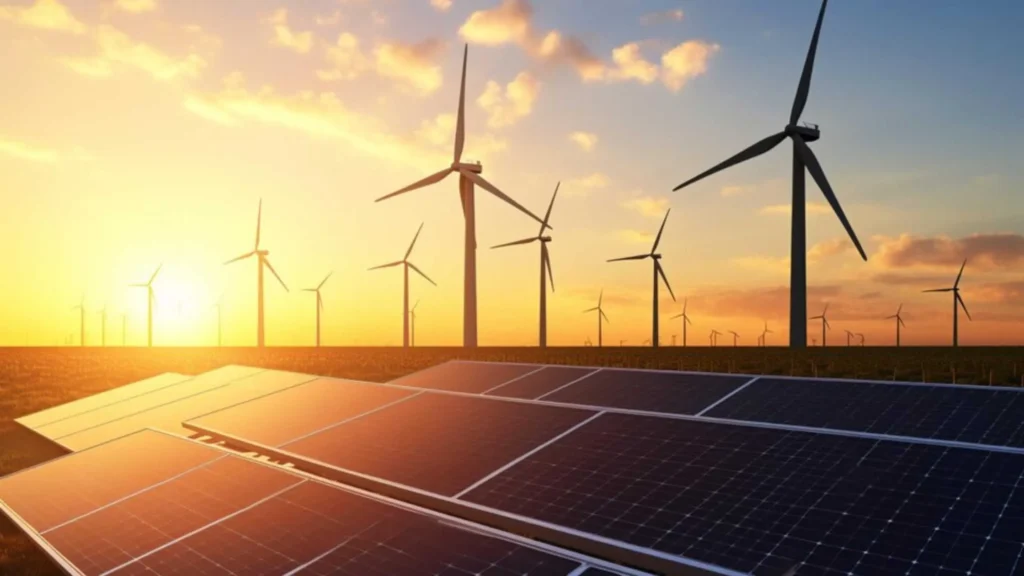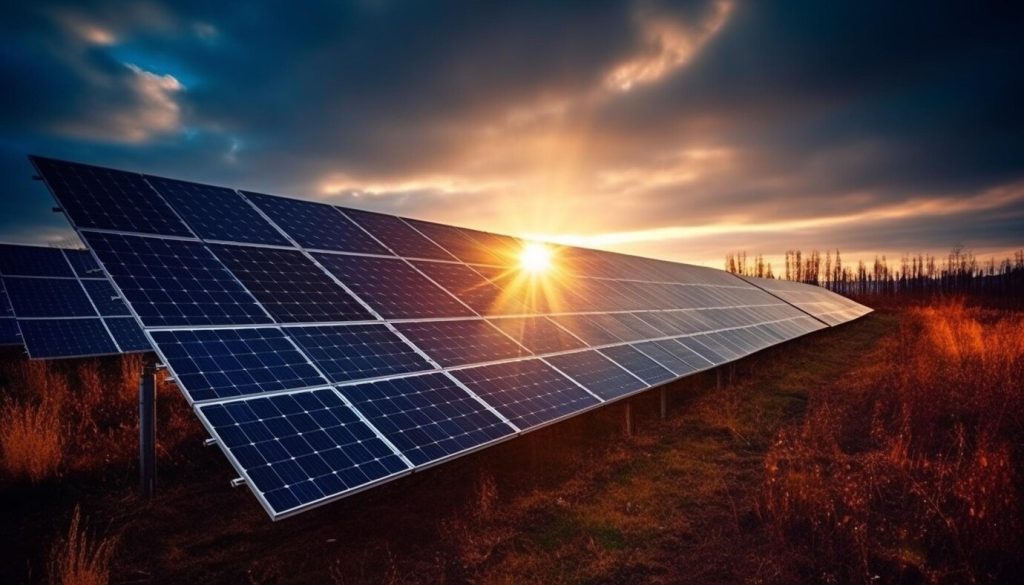Zero-carbon energy has become essential after intensifying climate change to lessen human activity’s adverse environmental effects. Often called clean energy or green energy, zero-carbon energy entails producing electricity with little to no carbon dioxide emissions (CO2). This blog explores the significance of zero-carbon energy and its several forms, technological developments, policy frameworks, obstacles, and future directions.
Understanding Zero Carbon Energy
Energy sources classified as zero carbon include those that produce no greenhouse gases during production. Together with nuclear energy, this category mainly consists of renewable energy sources like solar, wind, hydro, and geothermal power. Fossil fuels—coal, oil, and natural gas—are the leading causes of greenhouse gas emissions and climate change and stand in stark contrast to these sources.

The Importance of Zero Carbon Energy
1. Mitigating Climate Change: The pressing need to cut greenhouse gas emissions is the main force behind zero-carbon energy. Mainly due to CO2 emissions from fossil fuels, climate change poses severe risks to economies, ecosystems, and public health. Reducing these emissions and stabilizing global temperatures is essential.
2. Sustainable Development: Zero-carbon energy promotes sustainable development by offering a dependable and environmentally friendly power source. It also improves the general health of the environment by lowering air pollution, preserving water supplies, and maintaining biodiversity.
3. Energy Security: Energy security is improved by diversifying energy sources, such as renewable energy. Renewable energy sources are plentiful and readily available locally, lessening reliance on imported fuels. This contrasts with fossil resources, which are limited and vulnerable to geopolitical conflicts.
4. Economic Benefits: The shift to zero-carbon energy can boost economic growth by fueling the development of green jobs, energy technology innovation, and new business prospects in the renewable energy industry.
Primary Forms of Zero Carbon Energy
1. Solar Power:
Solar power captures energy from the sun using solar thermal or photovoltaic (PV) cells. Solar thermal systems use sunlight to create heat that then turns into electricity, whereas photovoltaic cells directly convert sunlight into electricity. Solar energy is becoming more practical and affordable thanks to developments in solar technology, such as concentrated solar power (CSP) systems and high-efficiency photovoltaic (PV) cells.
2. Wind Power:
Wind power harvests the wind’s kinetic energy using turbines. Modern wind turbines can be erected offshore or onshore and are efficient. Since wind farms can generate large amounts of electricity and are scalable, wind power is a critical component of the zero-carbon energy scenario.
3. Hydropower:
Hydropower uses the energy of falling or flowing water to create electricity. Like dams, large-scale hydropower projects can generate significant amounts of electricity, while micro- and small-scale hydropower systems provide flexibility for regional energy needs. Hydropower development does, however, consider the effects of massive dams on the environment.
4. Geothermal Energy:
Geothermal energy uses heat from the Earth’s core to produce electricity or direct warmth. Geothermal power plants are a desirable low-carbon energy source because of their dependability and compact land footprint. Geologically active areas benefit most from the technology.
5. Nuclear Power:
Nuclear fission reactions in reactors provide atomic energy. Nuclear power faces difficulties with radioactive waste, high prices, and public perception even though it produces no CO2 while in operation. However, developments in nuclear technology, such as fusion research and small modular reactors (SMRs), offer hope for safer and more effective atomic energy.
Technological Advancements in Zero Carbon Energy
1. Energy Storage:
Renewable energy’s intermittent nature is one of its main drawbacks. Energy storage technologies, including batteries, pumped hydro storage, and thermal storage, are essential to balance supply and demand. Advances in battery technology, especially lithium-ion and newly developed solid-state batteries make energy storage systems more capable and efficient.
2. Smart Grids:
Smart grid technology integrates automation and digital communication into the electrical grid, making it possible to distribute energy more effectively and dependably. A zero-carbon energy future depends on intelligent networks because they can enable demand response tactics, improve system stability, and handle fluctuating renewable energy sources.
3. Hydrogen Economy:
Hydrogen is becoming increasingly popular as a flexible energy carrier and storage option. Green hydrogen is created by electrolyzing renewable energy sources. It can be used as a clean fuel for industrial and transportation applications or fed into fuel cells to produce electricity. Infrastructure, storage, and hydrogen generation are all seeing rapid advancements in research and development.
4. Advanced Nuclear Technologies:
Nuclear technological advancements, including Generation IV reactors, thorium reactors, and nuclear fusion, have been made to overcome the drawbacks of conventional nuclear power. These innovations could change the place of nuclear energy in a zero-carbon future by offering more safety, lower costs, and less radioactive waste.
5. Renewable Integration:
Advanced forecasting, grid management, and energy storage technologies are needed to integrate various renewable energy sources into the grid. Hybrid renewable energy systems combine solar, wind, and storage and are being developed to offer a steady and uninterrupted power supply.
Global Trends in Zero Carbon Energy
Increasing Investments
The public and private sectors have been the main drivers of the increase in investment in zero-carbon energy. The majority of investments in renewable energy, $303 billion worldwide, went into solar and wind power in 2020, according to the International Energy Agency (IEA).
Technological Progress
Technological developments are increasing the cost-effectiveness and efficiency of zero-carbon energy. By addressing the intermittency problems with solar and wind power, for instance, battery storage innovations are making these energy sources more dependable.
Policy Support
Governments worldwide are passing laws to facilitate the switch to carbon-free energy. These laws include mandates for renewable energy, tax breaks, and subsidies. Notable governmental initiatives to support zero-carbon energy include the United States’ re-entry into the Paris Agreement and the European Union’s Green Deal.
Policy and Regulatory Frameworks
1. International Agreements:
Global programs like the Paris Agreement seek to reduce greenhouse gas emissions to slow global warming. Nation-level aggressive goals for using renewable energy sources and carbon neutrality are also being established to accelerate the shift to zero-carbon energy.
2. National Policies:
Subsidies, tax breaks, and feed-in tariffs for renewable energy projects are just a few of the measures governments worldwide are taking to support zero-carbon energy. Updates to regulatory frameworks are also being made to enable energy storage and grid integration.
3. Carbon Pricing:
Carbon pricing mechanisms like cap-and-trade programs and carbon levies aim to make the environmental costs of carbon emissions more widely internalized. Carbon pricing incentivizes investment in zero-carbon energy systems by raising the price of fossil fuels.
4. Research and Development:
Research & development expenditures from the public and private sectors are essential for advancing zero-carbon energy technologies. Technological advancements are fueled by funding for creative ideas, experimental programs, and government, business, and academic cooperation.
5. Public Education and Awareness:
Educating the public about the advantages of carbon-free energy and the significance of lowering carbon emissions is crucial. Outreach and education initiatives can help build community support and encourage a shift in behavior toward more sustainable energy usage.

Challenges and Barriers
1. Intermittency and Reliability:
The erratic characteristics of renewable energy sources, such as wind and solar power, make maintaining a steady and dependable power supply challenging. Developments in energy storage and grid management are essential to solving these problems.
2. Infrastructure and Investment:
Building new power plants, transmission lines, and energy storage systems will cost a lot of money when shifting to zero-carbon energy. Guaranteeing fair access to these investments and sufficient finance can take time and effort.
3. Policy and Regulatory Obstacles:
Inconsistent policies, regulatory obstacles, and a lack of cooperation between the various government tiers may hinder the creation and implementation of zero-carbon energy projects. We require regulatory structures that are both helpful and streamlined.
4. Public Perception and Acceptance:
Barriers to the widespread adoption of zero-carbon energy solutions include public acceptance of nuclear power and large-scale renewable energy projects. Addressing safety issues, considering environmental effects, and involving communities in decision-making are essential.
5. Technological Restrictions:
Despite tremendous advancements, specific zero-carbon energy solutions are still in the research and development phase or have technical restrictions. More creativity and research are required to overcome these obstacles.
The Road Ahead
1. Innovation and Research:
Overcoming the technological and financial obstacles to zero-carbon energy will require constant research and innovation. Developments in energy conversion, innovative materials, and energy storage technologies will propel the next wave of clean energy solutions.
2. International Cooperation:
Knowledge exchange and cooperation across nations can hasten the use of zero-carbon energy. Achieving the global climate targets requires cooperative research, policy formulation, and technology transfer efforts.
3. Policy Leadership:
Governments must demonstrate strong policy leadership and a sustained commitment to accelerating the switch to carbon-free energy. Investment and innovation can flourish in an environment supported by favourable regulatory frameworks and clear and consistent regulations.
4. Private Sector Involvement:
The private sector can dramatically aid the development and application of zero-carbon energy technologies. It can advance through corporate sustainability pledges, public-private collaborations, and investments in clean energy startups.
5. Community Involvement:
Involving local communities in the switch to zero-carbon energy guarantees that regional issues and requirements are addressed. Community-owned renewable energy projects, democratic decision-making, and participatory planning can increase support and ownership.
6. Education and Advocacy:
Raising public awareness and fostering support for zero-carbon energy require concerted efforts in education and advocacy. Educating people on renewable energy’s advantages, difficulties, and possibilities can influence individual behavior and spur group action.
Conclusion
Making the switch to carbon-free energy is not just necessary for the environment; it is also a means of ensuring a safe, successful, and sustainable future. We can build a robust and carbon-neutral energy system by utilizing renewable energy sources, developing technological advancements, putting supportive laws into place, and involving communities. Although achieving zero carbon energy is a challenging and complex path, there are many benefits to be gained, including improved ecosystems, robust economies, cleaner air, and a stable climate for future generations. We can effect change collectively, and the moment to act is now.



Pingback: Vijay Gupta
Pingback: Akshay
Transitioning to zero-carbon energy sources is pivotal for sustainable power generation. In Pakistan, the Gujranwala Electric Power Company (GEPCO) is actively promoting renewable energy integration to reduce carbon emissions and enhance energy sustainability.
GEPCO’s Renewable Energy Initiatives:
Net Metering Program: GEPCO offers a net metering program that allows consumers to generate their own electricity through renewable sources like solar and wind. Excess energy produced can be fed back into the grid, providing credits against future electricity bills. This initiative encourages the adoption of renewable energy systems among consumers.
GEPCO
Solarization of Tubewells: GEPCO is undertaking a project to solarize 27,000 tubewells at a cost of PKR 55 billion, with a 70% contribution from the federal government. This initiative aims to promote green energy and reduce the burden on the national grid.